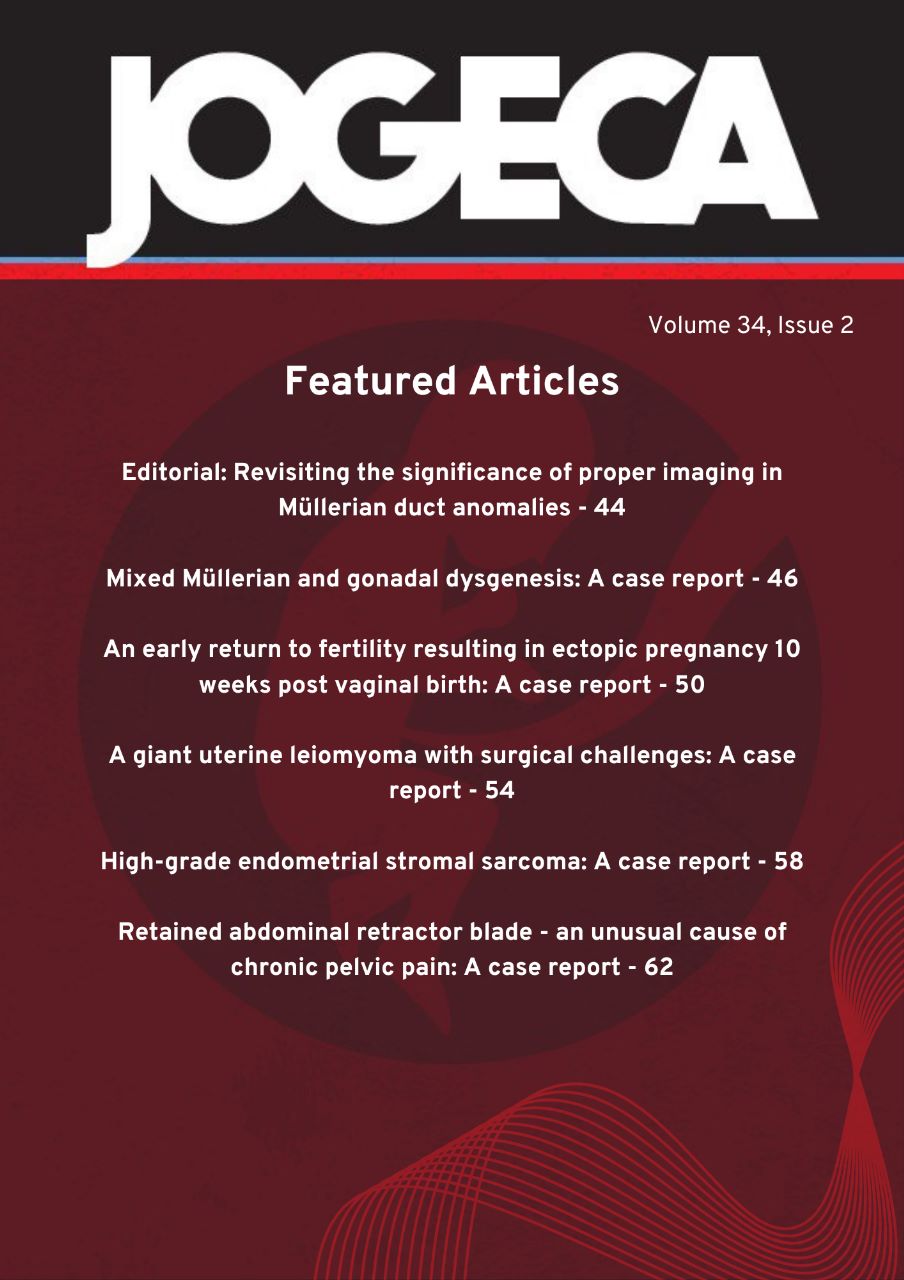Secondary malignancy in a vulva cancer patient – HPV-induced field cancerization: A case report
DOI:
https://doi.org/10.59692/jogeca.v36i1.290Abstract
Background: Human papillomavirus (HPV) infection is associated with oropharyngeal and anogenital
cancers in men and women. Approximately 90% of all cervical cancers are attributed to high-risk HPV
infections, and 60% of squamous cell carcinomas (SCC) of the vulva, vagina, anus, and penis are due to
HPV infection.
Case presentation: We present the case of a 26-year-old with retroviral disease managed for locally
advanced vulva cancer on external beam radiotherapy followed by wide excision of the residual tumor
and bilateral inguino femoral nodal dissection. She later presented with a history of foul-smelling vaginal
discharge. A biopsy confirmed moderately differentiated squamous cell carcinoma of the cervix clinically
and radiologically staged at 2B and 3B, respectively. She was scheduled to start chemotherapy with
carboplatin and paclitaxel after blood transfusion due to anemia.
Discussion: Field cancerization was coined by Slaughter et al. to describe the existence of generalized
carcinogen-induced early genetic changes in the epithelium from which multiple independent lesions
occur, leading to the development of multifocal tumors. In some cases, multiple contiguous tumor foci
coalesce, hence the lateral spread of squamous cell cancers. It was also observed that normal-looking
cells near malignant cells were histologically abnormal and therefore were part of the transformed cells in
a particular tumor field and consequently were responsible for the occurrence of local tumor
recurrences.
Conclusion: Field cancerization is a well-known and well-documented process of malignant
transformation. Several studies have confirmed the importance of this phenomenon in tumor
development. Surveillance is the key to detecting early recurrence and secondary malignancies.
Downloads
Published
How to Cite
Issue
Section
Categories
License
Copyright (c) 2024 The authors.

This work is licensed under a Creative Commons Attribution 4.0 International License.




